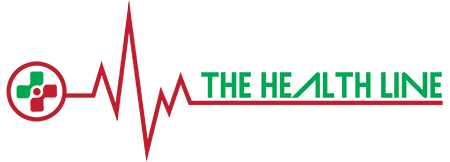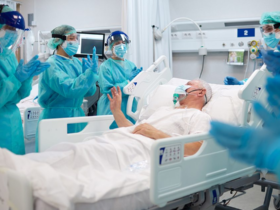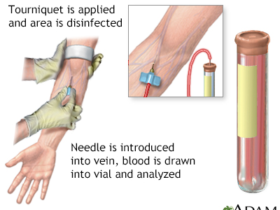Upper lip hair removal is a common cosmetic concern for many individuals, particularly women. The appearance of unwanted hair on the upper lip can be a source of self-consciousness and may prompt people to seek various methods to achieve smooth, hair-free skin. This comprehensive guide will explore the multiple upper lip hair removal techniques, their benefits, potential side effects, and tips for achieving the best results.

Understanding Upper Lip Hair
Upper lip hair, often called a moustache, is a natural occurrence in both men and women. While it is generally more noticeable and socially accepted in men, upper lip hair in women can cause distress due to societal beauty standards. This hair growth is primarily influenced by hormonal factors, genetics, and sometimes medical conditions like polycystic ovary syndrome (PCOS). Understanding the underlying factors contributing to upper lip hair growth can help select the most appropriate hair removal method.
Temporary Hair Removal Methods
Shaving
Shaving is one of the quickest and most accessible upper lip hair removal methods. It involves using a razor or electric shaver to trim the hair at the skin’s surface. While shaving is painless and inexpensive, the results are short-lived, typically lasting only a day or two. Additionally, there’s a common misconception that shaving causes hair to grow back thicker and darker, but this is not true; hair may feel coarser due to the blunt cut of the razor.
Waxing
Waxing involves applying a layer of warm or cold wax to the upper lip and then quickly pulling it off, removing the hair from the root. This method provides longer-lasting results than shaving, with smooth skin for up to four weeks. However, waxing can be painful, especially for sensitive skin, and may cause redness or irritation immediately after treatment. Using high-quality wax and following proper techniques is essential to minimize discomfort and skin damage.
Threading
Threading is an ancient hair removal technique that uses a twisted cotton thread to pluck hair from the follicle. It is exact and ideal for shaping eyebrows and removing upper lip hair. The results of threading can last up to six weeks. While threading is inexpensive and doesn’t involve chemicals, it can be uncomfortable and cause slight redness or swelling. A trained professional best performs it to ensure the best results and minimize skin irritation.
Depilatory Creams
Depilatory creams contain chemicals that break down the hair’s hair’s protein structure, allowing it to be wiped away from the skin’s surface. These creams are easy to use and can provide smooth results for about a week. However, they contain strong chemicals that can cause allergic reactions or burns if misused. It is crucial to perform a patch test before using a depilatory cream on the upper lip and to follow the instructions carefully to avoid adverse reactions.
Semi-Permanent Hair Removal Methods
Epilation
Epilators are electronic devices that mechanically grasp and pull out hair from the root. An epilator on the upper lip can provide smooth results for up to four weeks. While epilation can be more painful than other methods due to the nature of hair removal, regular use can make the process less uncomfortable over time. Additionally, epilation is cost-effective as it requires only a one-time device purchase.
Sugaring
Sugaring is a natural hair removal method similar to waxing. It uses a paste made of sugar, water, and lemon juice. The paste is applied to the skin and then removed in the opposite direction of hair growth, pulling hair from the root. Due to its natural ingredients, sugaring is less painful than waxing and causes less skin irritation. The results can last up to four weeks, making it a preferred option for those with sensitive skin or those seeking a more natural hair removal method.
Permanent Hair Removal Methods
Laser Hair Removal
Laser hair removal is a popular long-term solution for upper lip hair removal. This method uses concentrated light beams to target and destroy hair follicles, inhibiting future hair growth. Multiple sessions are required for optimal results, which can be costly. However, the results can be permanent or significantly reduce hair growth. Laser hair removal is most effective on individuals with light skin and dark hair, as the laser targets the pigment in the hair.
Electrolysis
Electrolysis is the only FDA-approved method for permanent hair removal. It involves inserting a fine needle into the hair follicle and applying an electric current to destroy the hair root. Electrolysis can be used on all skin and hair types, making it versatile. However, it is a time-consuming and potentially painful process that requires multiple sessions. Despite these drawbacks, electrolysis offers permanent results, making it a worthwhile investment for those seeking a definitive solution to upper lip hair.
Natural Hair Removal Methods
Turmeric and Milk Paste
A popular home remedy for removing paste from upper lip hair is turmeric and milk paste. Turmeric has anti-inflammatory and antibacterial properties, while milk is a gentle exfoliant. The paste is applied to the upper lip, left to dry, and then rubbed off gently, pulling hair with it. This method is natural and can lighten the skin over time, but the results are temporary and require regular application.
Papaya and Turmeric Paste
Papaya contains an enzyme called papain that helps break down hair follicles and inhibits hair growth. Mixing mashed papaya with turmeric to form a paste and applying it to the upper lip can gradually reduce hair growth. This method is gentle on the skin and offers additional benefits like skin exfoliation and brightening, but it requires consistent use for noticeable results.
Tips for Successful Upper Lip Hair Removal
Pre-Treatment Preparation
Before any hair removal treatment, it is essential to prepare the skin properly. Cleanse the skin thoroughly to remove any makeup, dirt, or oils that could interfere with the process. Gently exfoliating the skin can also help by removing dead skin cells and reducing the risk of ingrown hairs. Ensure the skin is dry and free from lotions or creams, as these can hinder the effectiveness of some hair removal methods.
Post-Treatment Care
After hair removal, the skin on the upper lip can be sensitive and prone to irritation. A soothing gel or aloe vera can help calm the skin and reduce redness. Avoid exposing the treated area to direct sunlight immediately after hair removal to prevent hyperpigmentation. Using a method involving chemicals, like depilatory creams, ensures the skin is moisturized to maintain hydration and elasticity.
Choosing the Right Method
Selecting the appropriate hair removal method depends on various factors, including skin sensitivity, pain tolerance, budget, and desired results. Natural methods or sugaring might be more suitable for those with sensitive skin. Individuals seeking long-term results may prefer laser hair removal or electrolysis despite the higher cost and multiple sessions required. Understanding the pros and cons of each method can help make an informed decision that aligns with personal preferences and skin type.
Conclusion
Upper lip hair removal is a personal choice; numerous methods are available to achieve smooth, hair-free skin. Each method has advantages and drawbacks, from temporary solutions like shaving and waxing to permanent options like laser hair removal and electrolysis. When selecting a hair removal method, it is essential to consider factors such as skin type, hair growth patterns, and personal preferences. Proper pre- and post-treatment care can also enhance the results and minimize potential side effects. Individuals can confidently make informed decisions to achieve their desired look by understanding the various techniques and their implications.
Also, Read the following: grade 1 fatty liver.
















Got a Questions?
Find us on Socials or Contact us and we’ll get back to you as soon as possible.